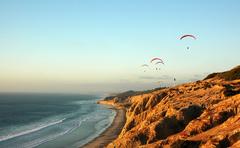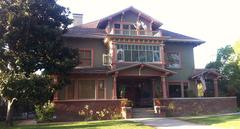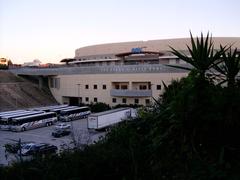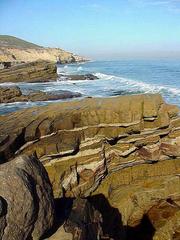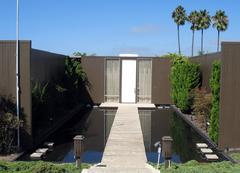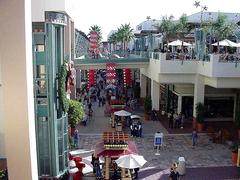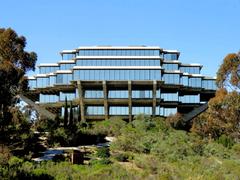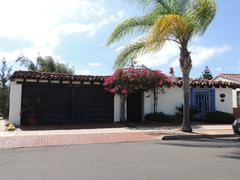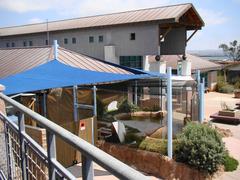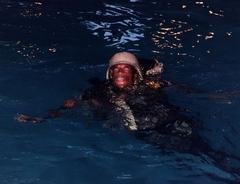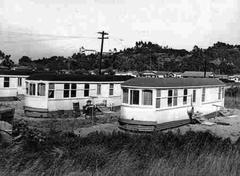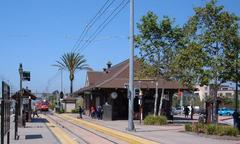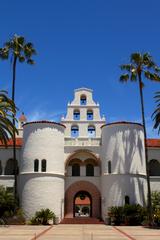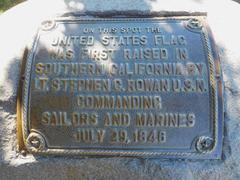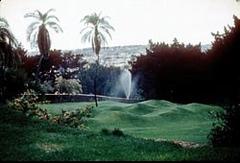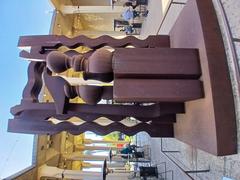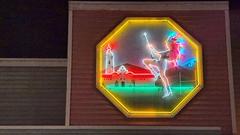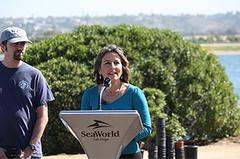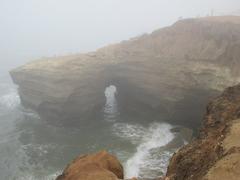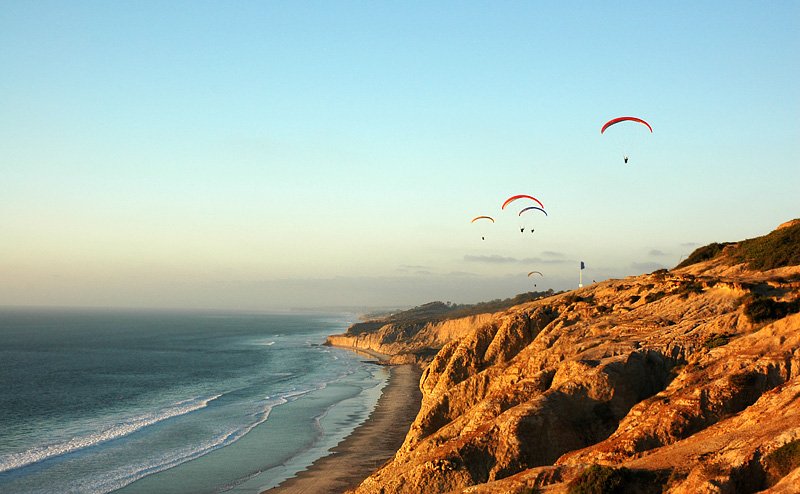
Torrey Pines State Beach San Diego: Visiting Hours, Tickets, and Travel Guide
Date: 14/06/2025
Introduction
Torrey Pines State Beach and its adjoining State Natural Reserve, located along San Diego’s spectacular coastline, are celebrated as one of Southern California’s most significant ecological and cultural landmarks. Framed by dramatic 300-foot sandstone cliffs and home to the rare Torrey pine (Pinus torreyana), this destination offers visitors a unique opportunity to experience rich biodiversity, geological wonders, and a deep cultural legacy.
Beyond its natural beauty, Torrey Pines preserves a rich heritage—serving as a traditional homeland for the Kumeyaay people for over 10,000 years and as a testament to early conservation efforts led by visionaries like Ellen Browning Scripps. Today, the reserve safeguards over 300 endangered plant species and critical wildlife habitats, including the endangered California gnatcatcher, while offering educational programs, accessible trails, and unforgettable recreation along San Diego’s pristine shore.
This guide compiles everything you need to plan a rewarding visit, including hours, ticketing, facilities, trails, accessibility, nearby attractions, and up-to-date conservation news. For the latest official information, explore the California State Parks – Torrey Pines and Torrey Pines Conservancy websites.
Table of Contents
- Indigenous Presence and Early History
- Discovery and Naming of the Torrey Pine
- Conservation History and Park Development
- Ecological and Geological Highlights
- Visiting Information (Hours, Tickets, Accessibility)
- Trails and Outdoor Activities
- Visitor Facilities and Safety
- Nearby Attractions and Photography
- Conservation Efforts and Community Engagement
- Frequently Asked Questions (FAQ)
- Plan Your Visit and Stay Connected
- Sources and Further Reading
Indigenous Presence and Early History
The lands of Torrey Pines have been inhabited by the Kumeyaay people for millennia. Archaeological evidence, including shell middens and artifacts, points to over 10,000 years of continuous habitation. The Kumeyaay skillfully utilized the lagoon, marshes, and ocean for sustenance, and their cultural imprint remains an integral part of the area’s identity (California State Parks PDF).
Discovery and Naming of the Torrey Pine
The rare Torrey pine, the reserve’s namesake, is the rarest native pine in North America—found only here and on Santa Rosa Island. It was first scientifically identified in the mid-19th century by botanist Dr. Charles Christopher Parry, who named it after his mentor Dr. John Torrey (Go Visit San Diego).
Conservation History and Park Development
Early Preservation Efforts
Recognizing the ecological importance of the area, local advocates began championing its protection in the late 1800s. In 1899, Torrey Pines Park was established—the foundation for today’s reserve. Threats from development and resource extraction persisted into the 20th century, but the city’s designation of the land as a nature reserve in 1921 and subsequent expansion were pivotal for its preservation.
Key Stewards and Expansion
Philanthropist Ellen Browning Scripps played a decisive role by hiring Guy Fleming as caretaker and thwarting major development projects, such as a proposed freeway. The founding of the Torrey Pines Association in 1950 (now the Torrey Pines Conservancy) catalyzed further land acquisitions and restoration efforts. The reserve has since expanded to about 2,000 acres, making it one of Southern California’s largest protected coastal habitats (California State Parks – Torrey Pines; Torrey Pines Conservancy).
Ecological and Geological Highlights
Rare and Endangered Ecosystems
Torrey Pines encompasses a mosaic of habitats, including coastal sage scrub, maritime chaparral, salt marshes, and the iconic Torrey pine woodland. The Los Peñasquitos Lagoon, a critical estuary at the beach’s north end, supports diverse bird and marine populations. Over 300 native plant species and numerous animals—including the endangered California gnatcatcher, bobcats, and foxes—find refuge here (California State Parks PDF).
Geological Significance
The area’s iconic 300-foot sandstone bluffs date back to the Eocene epoch (45–49 million years ago), offering dramatic coastal vistas and a rich geological record (Go Visit San Diego).
Conservation Challenges
The delicate Torrey pine faces threats from pests such as the California five-spined engraver beetle, pine pitch canker, and other invasive species (Tree Life CA; Save Plants). Human impacts—trampling, vandalism, and past clear-cutting—necessitate ongoing habitat management, trail closures, and restoration projects.
Visiting Information
Hours
- Reserve: Open daily from 7:15 AM to sunset.
- Beach: Accessible 24 hours, though parking and facilities operate during daylight.
Tickets and Parking
- Entrance Fees: $15–$25 per vehicle, varying by lot and season. California State Parks annual passes are accepted. No charge for pedestrians or cyclists (TLDR Travels).
- Parking: Main lots at South Beach and North Beach; arrive early on busy days. Overflow street parking is limited and subject to restrictions.
Accessibility
- ADA-accessible parking and restrooms are provided.
- Some paved trails (such as parts of Guy Fleming Trail) and the Visitor Center are wheelchair-friendly.
- Seasonal shuttle services may assist visitors with mobility needs (Fun Diego Family).
Trails and Outdoor Activities
Hiking
- Guy Fleming Trail: 0.7-mile easy loop with panoramic ocean views and interpretive signage.
- Razor Point Trail: 1.3-mile moderate out-and-back to sandstone overlooks.
- Beach Trail: 0.75-mile moderate descent with stairs leading to the beach.
- West Overlook Trail: Short, easy, and ideal for sunset viewing.
All trails are clearly marked; visitors are urged to stay on paths to protect fragile habitats (The Tourist Checklist).
Beach Activities
- Swimming & Sunbathing: North Beach offers lifeguard-supervised swimming during peak times; South Beach is popular with surfers and for tide pool exploration.
- Paragliding: The adjacent Torrey Pines Gliderport is famous for paragliding and hang gliding, offering tandem flights and stunning coastal views.
- Golfing: The Torrey Pines Golf Course, located nearby, is a world-renowned public course with ocean vistas (Fun Diego Family).
Guided Walks & Special Events
Docent-led walks are conducted on weekends, exploring the reserve’s unique ecology and history. Mindful walks are offered Sundays at 8 AM. Check the Visitor Center for the latest schedule.
Visitor Facilities and Safety
- Restrooms: Available at main parking lots and near the Visitor Center.
- Water: Limited fountains—bring your own, especially in warm weather.
- Food: No concessions; picnic tables are available for those bringing their own meals.
- Visitor Center: Offers maps, educational exhibits, and staff advice.
Safety Tips
- Steer clear of unstable cliffs due to rockfall risk.
- Rattlesnakes inhabit the reserve—stay alert and on trails.
- No dogs, bikes, drones, or fires; alcohol and smoking are prohibited.
- Always check tide charts before accessing the beach.
Nearby Attractions and Best Photographic Spots
- Nearby: Torrey Pines Golf Course, Birch Aquarium, Del Mar Racetrack, UC San Diego, Los Peñasquitos Canyon Preserve.
- Photography: Sunrise and sunset from the cliffs, tide pools at low tide, and the Torrey pine groves are highly recommended (Go Visit San Diego).
Conservation Efforts and Community Engagement
Ongoing conservation initiatives, spearheaded by groups like the Torrey Pines Conservancy and San Diego Zoo Wildlife Alliance, focus on habitat restoration, pest management, and public education (Save Plants). Volunteers frequently participate in citizen science, trail maintenance, and habitat restoration days.
Frequently Asked Questions (FAQ)
Q: What are the visiting hours?
A: Reserve is open daily 7:15 AM–sunset; beach is accessible 24 hours.
Q: Is there an entrance fee?
A: Yes, $15–$25 per vehicle; pedestrians and cyclists enter free.
Q: Are guided tours available?
A: Yes, docent-led walks are offered on weekends; check with the Visitor Center.
Q: Are pets allowed?
A: No, pets are not permitted on trails or the beach.
Q: Can I camp overnight?
A: No, camping is prohibited.
Q: Is the area accessible?
A: ADA parking, restrooms, and some trails are accessible. Check with the Visitor Center for current details.
Plan Your Visit and Stay Connected
For the most current information on conditions, closures, and events, visit the official California State Parks – Torrey Pines page or call the Visitor Center (858-755-8219 / 858-755-2063). Download the Audiala app for interactive maps, audio guides, and real-time updates. Share your experience on social media with #TorreyPinesVisit and consider joining conservation volunteer opportunities.
Summary & Visitor Tips
- Arrive early to secure parking during peak times.
- Bring water, sun protection, and sturdy shoes.
- Check tide charts for tide pool exploration.
- Respect all posted rules to help preserve sensitive habitats.
- Support conservation by participating in volunteer programs or donating to the Torrey Pines Conservancy.
Torrey Pines State Beach stands as a living symbol of San Diego’s commitment to balancing natural wonder with human stewardship. By planning ahead and embracing responsible recreation, every visitor plays a role in preserving this extraordinary coastal sanctuary.
Sources and Further Reading
- California State Parks – Torrey Pines
- Torrey Pines Conservancy
- Go Visit San Diego
- Tree Life CA
- Save Plants
- TLDR Travels
- The Tourist Checklist
- Fun Diego Family
